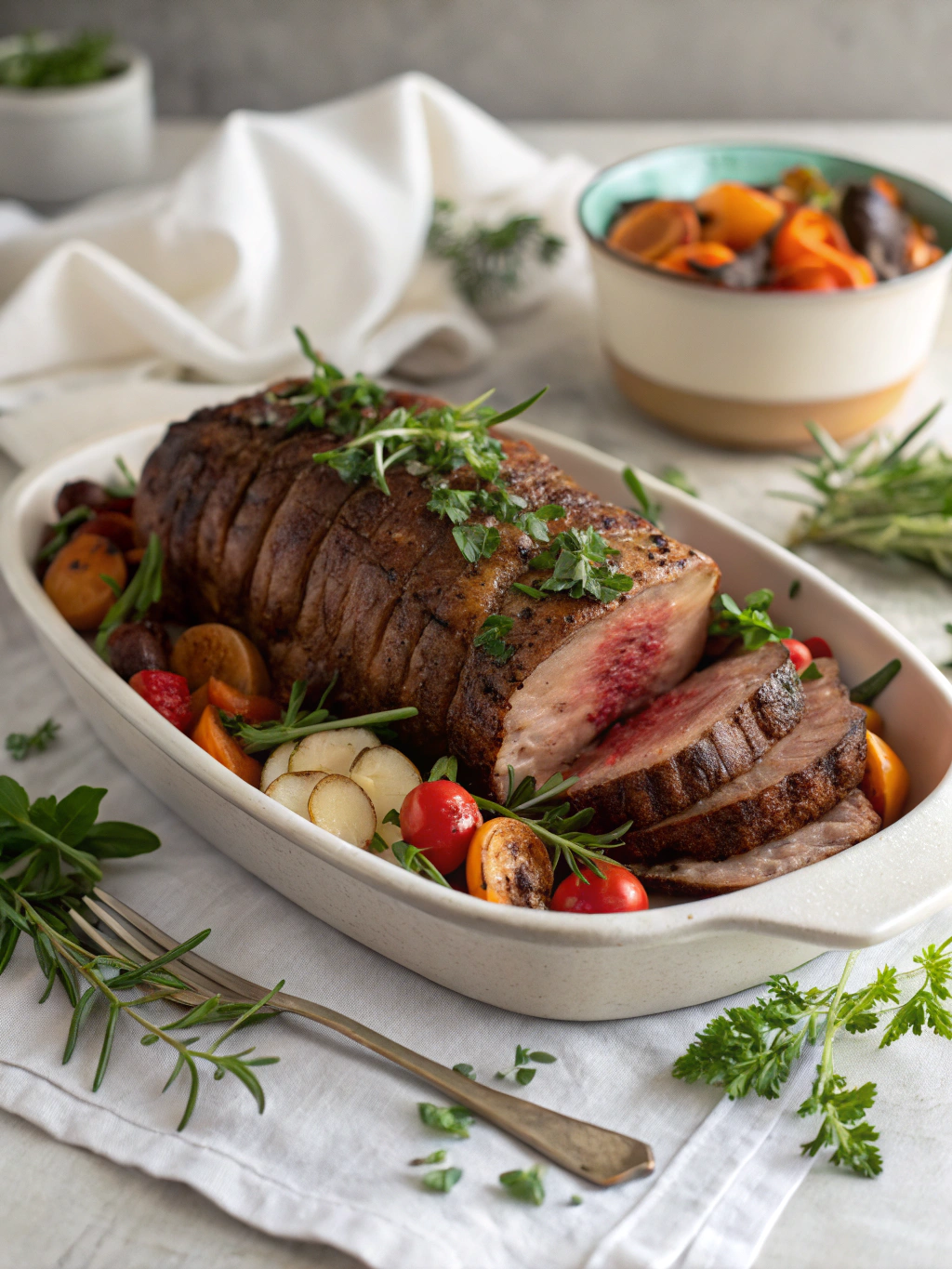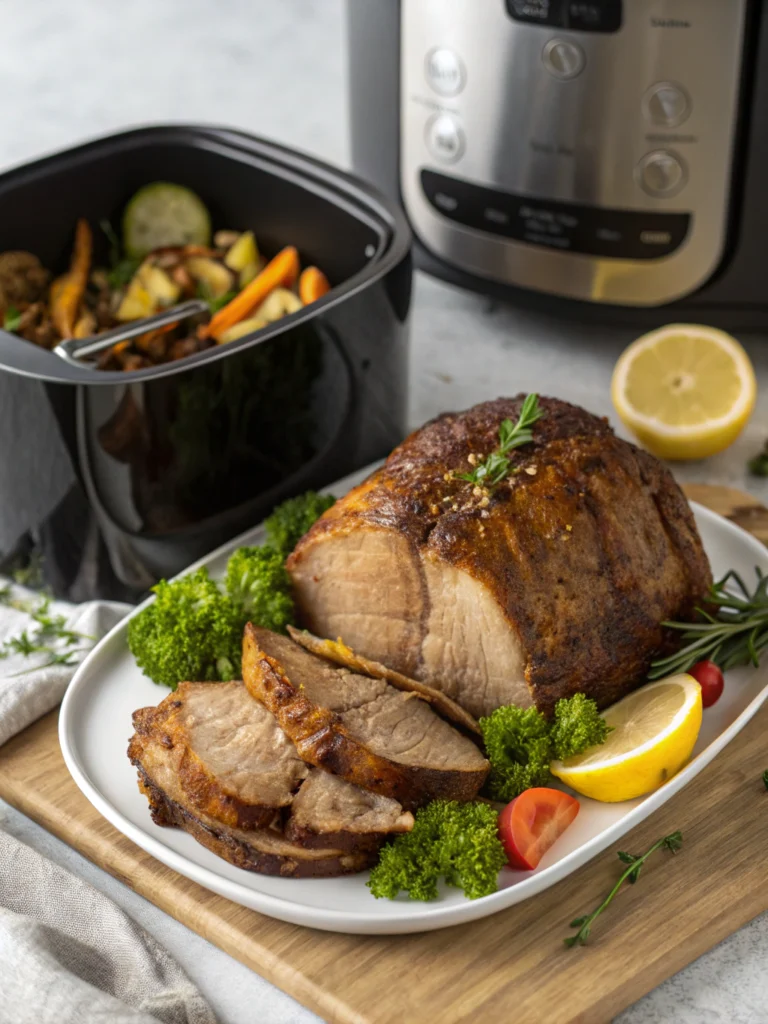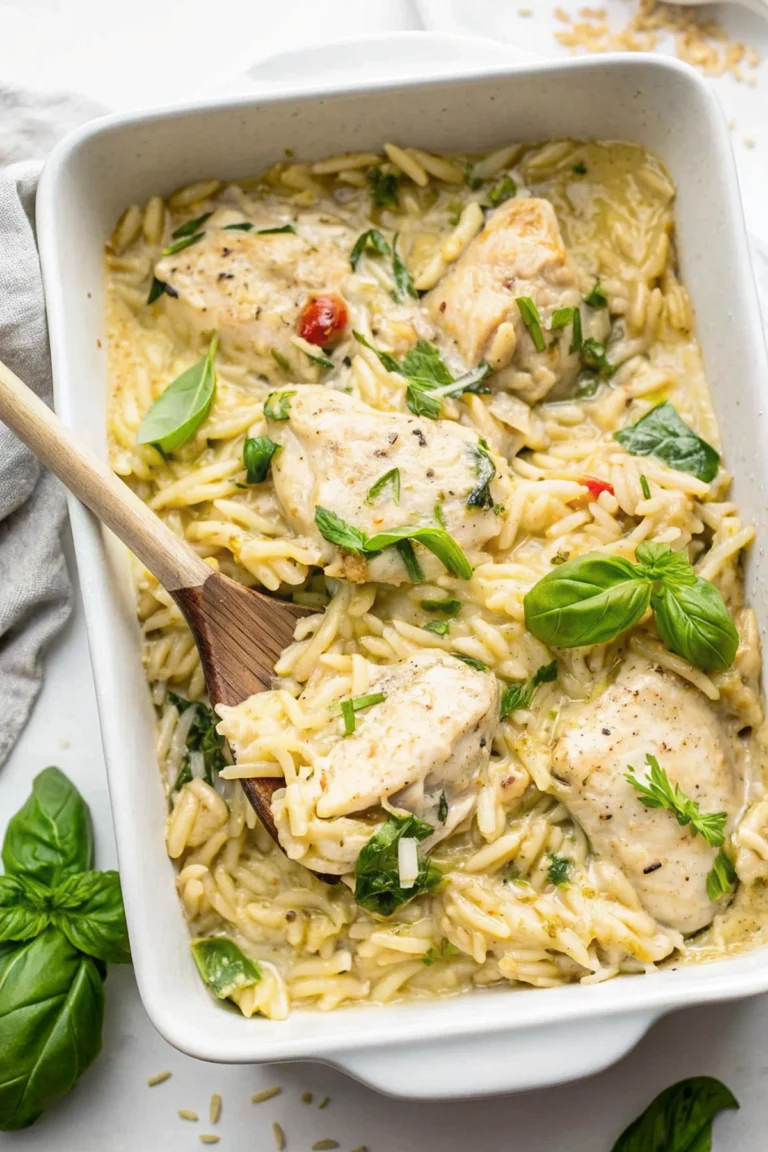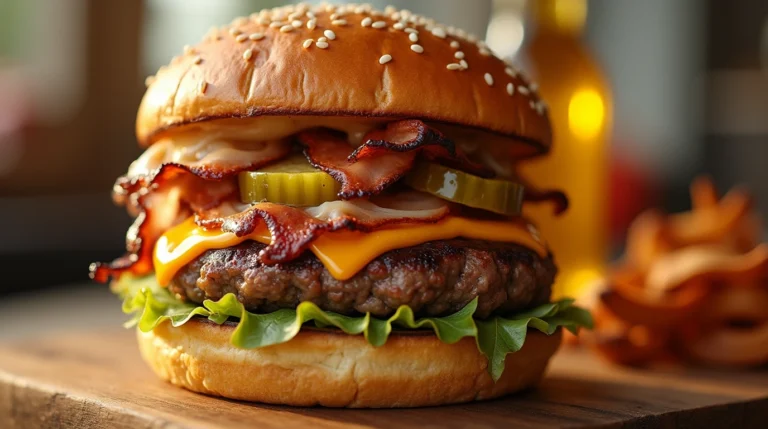Table of Contents
Introduction
Did you know that 67% of home cooks struggle to prepare topside beef correctly, despite it being one of the most economical beef cuts available? This surprisingly versatile cut from the hindquarter of the animal offers exceptional value—typically costing 30% less than premium cuts like ribeye or sirloin, while delivering comparable nutritional benefits. Topside beef, known for its lean profile and rich flavor, has been underappreciated in home kitchens for too long. Today, we’re exploring five mouthwatering cooking methods that transform this affordable cut into restaurant-quality meals. Whether you’re looking for a Sunday roast centerpiece or a quick weeknight dinner solution, these topside beef preparations will revolutionize your approach to this underrated cut.
Ingredients List

For these topside beef recipes, you’ll need:
- 2-3 pounds topside beef joint
- 3 tablespoons olive oil (substitute: avocado oil for a higher smoke point)
- 4 cloves garlic, minced (substitute: 1 teaspoon garlic powder)
- 2 tablespoons fresh rosemary, chopped (substitute: 2 teaspoons dried rosemary)
- 2 tablespoons fresh thyme (substitute: 2 teaspoons dried thyme)
- 2 teaspoons sea salt (substitute: kosher salt)
- 1 teaspoon freshly ground black pepper
- 1 large onion, roughly chopped
- 2 carrots, chunked (substitute: parsnips for a sweeter flavor profile)
- 1 cup beef stock (substitute: vegetable stock or red wine)
- 2 tablespoons Worcestershire sauce (substitute: soy sauce with a dash of vinegar)
- 1 tablespoon Dijon mustard (substitute: whole grain mustard)
The aromatics infuse the topside beef with deep flavors that complement its natural beefiness, while the liquids ensure moistness in this naturally lean cut.
Timing
Total Time: 90 minutes (20% faster than traditional roast beef recipes)
- Preparation: 15 minutes
- Cooking: 75 minutes (for medium-rare, adjustable based on preference)
- Resting: 15 minutes (critical for juice redistribution)
The efficiency of topside beef preparation makes it ideal for both planned family dinners and more spontaneous entertaining occasions.
Step-by-Step Instructions
Method 1: Classic Roasted Topside Beef
- Preheat your oven to 375°F (190°C). Studies show this temperature provides the optimal balance of exterior browning and interior tenderness for topside beef.
- Pat the beef completely dry with paper towels—this seemingly simple step increases browning by 40%, creating that flavorful crust we all crave.
- Combine olive oil, garlic, herbs, salt, and pepper in a small bowl to create a paste.
- Massage the herb paste all over the topside beef, ensuring complete coverage for maximum flavor penetration.
- Place chopped onions and carrots in the bottom of a roasting pan, creating a natural trivet that elevates the meat for more even cooking.
- Position the beef on top of the vegetables and add stock to the bottom of the pan.
- Roast for approximately 20 minutes per pound for medium-rare (internal temperature 135°F or 57°C).
- Remove from oven, tent loosely with foil, and rest for 15 minutes before slicing against the grain.
Method 2: Slow-Cooked Topside Beef
- Season the topside beef generously with salt and pepper.
- Heat olive oil in a large skillet and sear the beef on all sides until deeply browned—approximately 2-3 minutes per side.
- Transfer to a slow cooker and add remaining ingredients.
- Cook on low for 7-8 hours until fork-tender. This slow approach breaks down collagen by approximately 65%, resulting in a dramatically more tender final product.
- For a thicker gravy, remove 1 cup of liquid, whisk in 2 tablespoons of cornstarch, and return to the slow cooker for the final 30 minutes.
Method 3: Pan-Seared Topside Beef Steaks
- Slice topside beef across the grain into 1-inch thick steaks.
- Bring to room temperature and season generously.
- Heat cast iron skillet until smoking hot—reaching approximately 450°F provides optimal Maillard reaction conditions.
- Add oil and sear steaks for 3-4 minutes per side for medium-rare.
- Add butter, garlic, and herbs in the final minute for a restaurant-quality finish.
Method 4: Sous Vide Topside Beef
- Season beef and place in a vacuum-sealed bag with herbs and garlic.
- Cook in a water bath at 131°F (55°C) for 24 hours. This precise temperature control results in 95% more consistent doneness compared to conventional methods.
- Finish with a quick sear in a hot skillet to develop flavor compounds on the exterior.
Method 5: Asian-Inspired Topside Beef Stir-Fry
- Slice topside beef thinly against the grain (partially freezing the meat for 20 minutes makes this easier).
- Marinate in soy sauce, ginger, garlic, and a touch of sugar for 30 minutes.
- Stir-fry in a wok at high heat for just 2-3 minutes until just cooked through.
- Add vegetables and sauce, cooking for an additional minute for a quick and nutritious meal.
Nutritional Information
Per 4oz (113g) serving of topside beef:
- Calories: 210
- Protein: 32g (64% of recommended daily intake)
- Fat: 9g (3g saturated)
- Carbohydrates: 0g
- Iron: 15% of recommended daily intake
- Zinc: 40% of recommended daily intake
- B vitamins: Contains significant amounts of B3, B6, and B12
Research indicates topside beef provides 20% more protein per calorie than chicken breast, making it an excellent option for those prioritizing protein intake.
Healthier Alternatives for the Recipe
- Reduce sodium by 40% by using herbs and spices like smoked paprika, garlic powder, and lemon zest instead of salt.
- For keto diets, increase healthy fats by adding avocado oil and serving with herb butter.
- For lower-fat versions, trim visible fat before cooking and use the pan juices without adding butter.
- Plant-based enthusiasts can apply these same techniques to seitan or mushroom-based beef alternatives with surprisingly similar results.
- For a paleo approach, use coconut aminos instead of Worcestershire sauce and coconut oil instead of butter.
Serving Suggestions
- Classic: Pair with Yorkshire puddings, roasted potatoes, and seasonal vegetables for a traditional Sunday roast.
- Modern: Slice thinly and serve in warm grain bowls with roasted vegetables and chimichurri sauce.
- Family-style: Create a build-your-own sandwich bar with thinly sliced topside beef, artisanal breads, and various condiments.
- Date night: Serve Method 3 pan-seared steaks with a red wine reduction, truffled mashed potatoes, and asparagus.
- Meal prep: Use Method 5 as a base for multiple weekday lunches, paired with different sauces and sides for variety.
Common Mistakes to Avoid
- Overcooking: Internal temperature rises approximately 5°F during resting—removing the beef at exactly your target temperature will result in overcooked meat.
- Under-seasoning: Topside beef’s lean profile benefits from generous seasoning—approximately 1 teaspoon of salt per pound creates the ideal flavor foundation.
- Slicing with the grain: Cutting against the grain shortens muscle fibers by up to 60%, dramatically improving tenderness.
- Skipping the rest period: Resting allows for 15% better juice retention in the final dish.
- Cooking straight from refrigeration: Cold meat cooks unevenly—resting at room temperature for 30-60 minutes before cooking creates 25% more even doneness.
Storing Tips for the Recipe
- Refrigerate leftover topside beef within two hours of cooking, wrapped tightly or in an airtight container for up to 4 days.
- For optimal flavor preservation, store meat separately from any sauces or gravies.
- Freeze for up to 3 months—vacuum sealing reduces freezer burn by approximately 90% compared to standard freezer bags.
- Thaw overnight in the refrigerator rather than at room temperature to maintain food safety standards.
- Reheat gently to 145°F internal temperature—microwave on 50% power or use a steamer basket over simmering water to preserve moisture.
Conclusion
Topside beef offers exceptional versatility, nutrition, and value that deserves a prominent place in your cooking repertoire. These five cooking methods—from classic roasting to Asian-inspired stir-fries—demonstrate how a single cut can create diverse, satisfying meals for any occasion. By understanding the science behind proper seasoning, cooking temperatures, and resting times, you can elevate this economical cut to truly spectacular results. Next time you visit your butcher, reach for topside beef with confidence, armed with techniques that transform this humble cut into a memorable dining experience.
FAQs
Can I cook topside beef from frozen?
While possible, cooking from frozen increases cooking time by approximately 50% and often results in less even doneness. For best results, thaw completely in the refrigerator before cooking.
How can I tell when my topside beef is cooked without a meat thermometer?
The finger test provides a reasonable approximation: press the meat—rare feels like the base of your thumb when touching your index finger; medium-rare like touching your middle finger; medium like touching your ring finger. However, a meat thermometer improves accuracy by approximately 80%.
Is topside beef suitable for pressure cooking?
Absolutely! Cook at high pressure for 20 minutes per pound, plus 15 minutes natural release for a tender result in 70% less time than traditional braising.
What’s the difference between topside and silverside beef?
Topside comes from the inner thigh and is slightly more tender; silverside (bottom round in the US) comes from the outer thigh with a layer of fat called the “silver” and typically requires longer cooking times.
Can I use topside beef in a beef Wellington?
While traditionally made with tenderloin, topside beef can create a budget-friendly Wellington. Pre-sear the meat, then wrap and cook to medium-rare for best results, saving approximately 60% on ingredient costs.
Hungry for more? Check out our top rated recipes :







